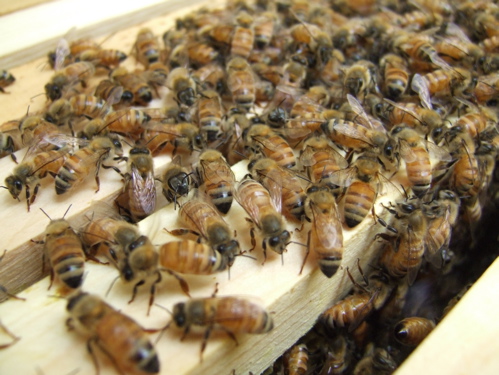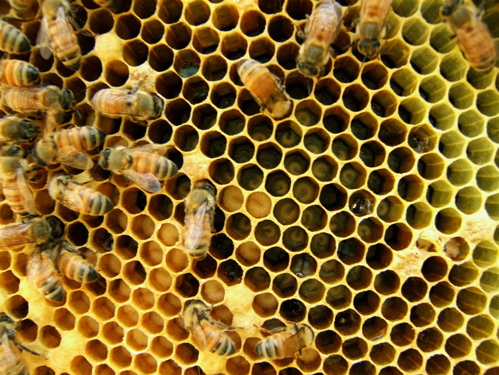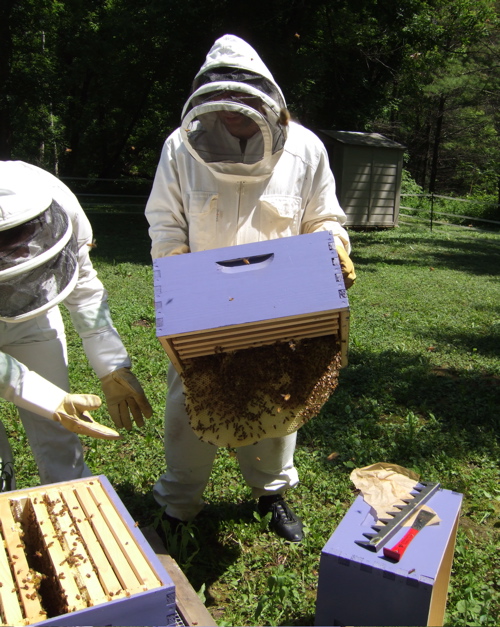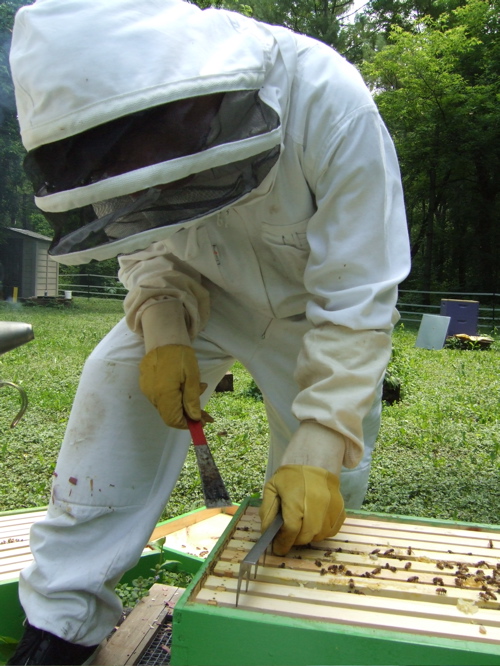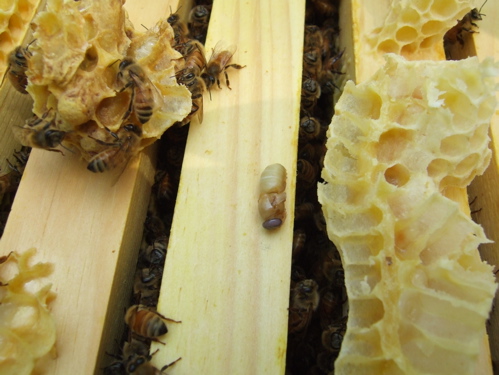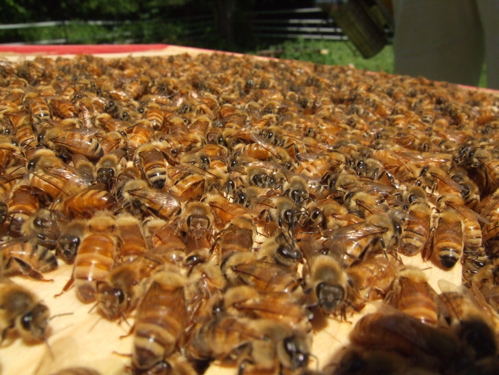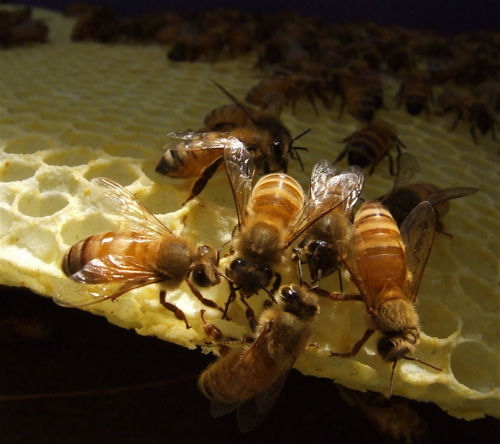 I've been doing so much traveling, I have not been able to visit much with our bees. Poor Lorraine had to take over beekeeping duties while both Mr. Neil and I were away. She did her best, making sure to give the bees more room to build as they filled in their hive boxes. We have one hive, the yellow Hannah hive that had been slow to build and draw out comb. Lorraine reported on Twitter that the hive had no new brood and whatever larvae was present was shriveled, other than that there was capped honey. We advised her to let the hive be, add a box if it needed it and maybe keep a food bucket on there. As soon as Mr. Neil returned from his trip and I returned from North Dakota, we'd check it and decide what do to. The shriveled larvae had me worried...did we have some new disease to deal with?
I've been doing so much traveling, I have not been able to visit much with our bees. Poor Lorraine had to take over beekeeping duties while both Mr. Neil and I were away. She did her best, making sure to give the bees more room to build as they filled in their hive boxes. We have one hive, the yellow Hannah hive that had been slow to build and draw out comb. Lorraine reported on Twitter that the hive had no new brood and whatever larvae was present was shriveled, other than that there was capped honey. We advised her to let the hive be, add a box if it needed it and maybe keep a food bucket on there. As soon as Mr. Neil returned from his trip and I returned from North Dakota, we'd check it and decide what do to. The shriveled larvae had me worried...did we have some new disease to deal with?
Non Birding Bill and I headed out to meet up with Mr. Neil and Lorraine for a hive inspection. We started with the presumed queenless hive. I wanted to see if the Hannah hive was failing and if a disease was the cause. If she was merely queenless, we thought we might combine her with another hive, but we weren't going to do that if she had something like foulbrood. However, when we go there, we could see a fair number of bees going in and out, some even arriving with loaded pollen baskets.
There were a fair number of worker bees inside and they were rather laid back but did not have that queenless buzz, they sounded mellow but harmonious in their buzzing. We took out a frame to assess the situation.
Not only did we find capped brood (larvae pupating into new workers) but we found very fresh, healthy looking larvae and eggs. The queen was definitely alive and kicking into high gear producing some larvae. We told Lorraine that she did the right thing by just letting the hive be. What she thought was capped honey was capped brood. I didn't see any shriveled larvae, just plump healthy larvae. I tested a couple of capped off cells for the presence of foulbrood but they were healthy. What a big sigh of relief--we still have four hive for the summer! We just adjusted the spacing of the frames in the hive and let Hannah keep growing.
The only big problem we encountered in any of the hives was the violation of bee space. The term "bee space" came from Reverend Lorenzo Lorraine Langstroth who in the 1800s figured out that if a space of 3/8 inch is left in the hive for the bees to move around in, the bees will neither build comb in the space nor cork it up with propolis (bee duct tape). If you allow your frames to fall into violation of that space you get what's called "feral comb." As you can see in the above photo, the purple Yvaine hive had a major bee space violation going on. NBB and I had to pry off that excessive comb while Mr. Neil held the heavy brood box.
We carefully scraped it off to ensure that the queen was not there. We couldn't just leave it, the oddly placed comb would have caused more problems with future inspections and encouraged unregulated comb construction. Mr. Neil took care to properly space all of the frames in all of our hives so we could avoid future violations. Above, he's using a frame spacing tool along with a hive tool to set all the frames straight and into proper alignment for good bee space. I'd heard from more experienced beekeepers that frame spacing tools were a toy, but for newer beekeepers, they really do help cut down on the feral comb. I cannot eyeball bee space.
As we scraped of some of the feral comb, a few developing pupae came out. I felt bad, but again it's worse in the long run to let the comb stay. The queen lays thousands upon thousands of eggs, a few lost larvae will not destroy the hive. Lorraine however, was a tad grossed out. Here's a video of Mr. Neil properly scraping some feral comb with his tool and explaining larvae:
[youtube]http://www.youtube.com/watch?v=w97rNEzUlqU[/youtube]
One happy surprise was that our Juliet hive which started as a bit of an angry hive is mellowing out.
We had to make some minor repairs to her base...well, NBB and Mr. Neil did. Lorraine and I sat and studied the chilled out bees while they worked (didn't want to be in the way while the boys did the heavy lifting). It's just so relaxing spending time with chill bees while they do what they do and how pretty they look, all golden in the sun. You can watch them here, if you would like to experience the mellow red Juliet hive.
Oh, one final note: How do the boys like to spend their time while working with the hives? They make up haiku:
[youtube]http://www.youtube.com/watch?v=7CZAOlWgbfM[/youtube]
What a joy to have happy harmonious hives without the drama of the previous summers. Let's hope that holds when our Russians arrive.


